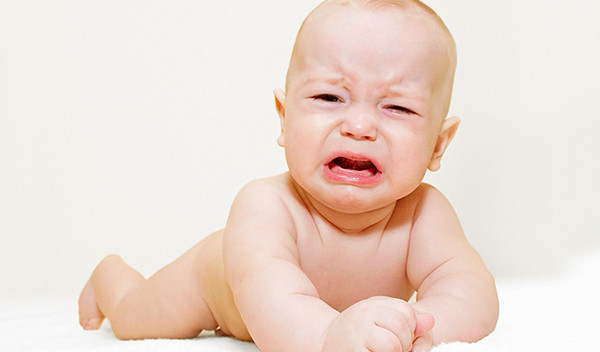A child has colic: reasons, how to understand and what to do
The first months of a baby's life are the most wonderful time for a new mother. The kid does not climb anywhere, constantly sleeps and eats well. But even this wonderful time is darkened by crying. Little babies cry because they are hungry, they experience discomfort from a dirty diaper to painful sensations in the tummy. Today we will talk about childhood colic, why they occur, how to recognize and treat.
Content
Causes of colic in children
A small organism is just learning to work, it is checking if everything is in order. Therefore, it is not surprising that many processes cause discomfort. Colic in a newborn is a pain in the tummy, muscle spasm. Most often caused by increased gas production, bloating. The fact is that the children's gastrointestinal tract does not work in the mother's stomach. After all, all nutrients enter the bloodstream through the umbilical cord.
After birth, the baby begins to actively suck milk or mixture. All metabolic processes and systems are started. But their work has not yet been debugged, the intestines do not have the necessary bacteria for milk processing. Absolutely all children suffer from increased gas production, even completely healthy ones.
Causes of gas formation in children:
- new to baby food;
- swallowing air with milk;
- lack of enzymes for high-quality digestion;
- immaturity of the gastrointestinal tract;
- the quality of the milk or mixture;
- overfeeding the child;
- weak tummy muscles;
- upset stool.
You should not try to independently diagnose the cause of the crying baby. Be sure to contact your pediatrician. Only a specialist can correctly recognize the symptoms and prescribe treatment.
Intestinal colic: symptoms
The main symptom of colic is an inconsolable cry. The child does not respond to the mother's touch, to attempts to distract with a rattle. The kid bends in an arc and screams "like a cut." The tummy becomes stone. The handles are compressed into cams.
Doctors even came up with a theory of three - colic begins at about 3 weeks of a baby's life. They last no more than 3 hours a day and pass by the end of 3 months of life.
Babies often do not have a debugged system of stoplights, due to the immaturity of the nervous system. If you are bottle feeding your baby, do not overfeed. Be sure to hold the bottle at a 45 degree angle so that air will not enter the baby and remain at the bottom of the bottle.
Children who fed with mother's milk often suffer from colic due to improper mom's diet... In the first 3 months of breastfeeding, you need to remember the following simple rules:
- Switch to cereals if possible.
- From vegetables you can potatoes, zucchini, cabbage. But not often.
- Among the variety of fruits, at first you can only green apples, not very sweet.
- Switch to green tea, many babies have black tea constipation.
- Do not overuse flour and bakery products. These are the main allies of bloating and constipation. And there are very few nutrients in them.
- No legumes!
- Drink milk carefully, it is better to switch to fermented milk products. And add pure milk to tea and cereals.
- Be sure to include fennel or dill tea in your diet. This will have a beneficial effect on the amount of milk and help fight colic in the baby.
- Make sure your baby is breastfeeding correctly. The nipple should enter the baby's mouth along with the eagle. The lower lip is turned outward a little.
Colic in the abdomen in a child: what to do
Stay calm first. Yes, baby crying gets on your nerves. But if the mother starts to freak out or raise her voice to the baby, the situation will only worsen. The "calmness" of the child in the future depends on the mental comfort of the mother. Don't allow yourself emotional outbursts around your baby.
If your baby develops any of the following symptoms, see a doctor immediately.
- the baby vomits (not to be confused with regurgitation after eating);
- blood appeared in the poop;
- increased body temperature;
- no weight gain.
If none of the above is present, then the baby has normal infant colic. In this case, you need:
- Put the child in a column. This is done so that excess air would come out. This procedure must be performed after each feeding.
- For urgent relief of emergency pain, warmth will help. Put your dad's hand on your tummy or an iron-ironed diaper folded in several layers. The belly-to-belly posture helps well.
- Tummy massage helps the gaziks to move away well. Gently stroke the baby's abdomen clockwise with your fingertips.
- Bathing in the bath also helps relieve pain.
- An hour or two after feeding, it is recommended to lay the baby on his stomach. It helps to strengthen the abdominal muscles and helps to pass gas.
- Do not forget to give your child a general strengthening massage every day. The sooner the abdominal muscles mature, the easier it will be to deal with colic.
- If the baby is breastfed, be sure to add some water after feeding. The formula has some differences in composition compared to breast milk. Often it turns out a little thicker than it should be. Try changing the mixture if that doesn't work.
- Be sure to use bottles with nipples that have an Anti-colic system. They are produced by firms: Avent, Brown and others.
If all else fails, then you can try to turn to traditional medicine or medicines.
Folk remedies for colic
Our grandmothers treated colic with a decoction of medicinal herbs:
- fennel;
- dill;
- mint;
- lemon balm;
- thyme;
- chamomile.
Give half a teaspoon of the cooled broth before each feeding. No more than 50 grams of infusion can be used per day.
Even earlier, gas pipes were often used. You can buy them at the pharmacy. The tip of the tube is lubricated with baby and cream and inserted into the baby's anus. No more than 3 centimeters. In this case, the baby's legs should be pulled up to the tummy. It is good to combine the application of a tube and a tummy massage. But modern medicine claims that this device does not do anything good for the child. You can achieve addiction and the development of "lazy bowel syndrome". When the process of defecation in a baby will take place only with the use of aids.
Colic preparations
Modern pharmaceutical companies offer a wide selection of all kinds of colic remedies. These are syrups, powders, and emulsions. Be sure to consult a pediatrician before giving any medicine to a baby.
First of all, all children are prescribed drugs with bacteria. Bifidumbacterin, Bifiform baby, Linex and others. But to alleviate the pain syndrome with colic, it is necessary to use a medicine that contains simethicone. This is a substance that helps to remove gas from the body naturally. For example:
- Espumisan.
- Bobotik.
- Sub simplex.
- Mezim.
- Creon.
- Lactazar.
Prevention of colic in children
- the right mom's diet or the right mixture;
- anti-colic bottle;
- daily massage;
- remember to keep the baby upright after each feed;
- when feeding, the baby's head should not be below the body, this leads to swallowing air;
- be sure to lay the crumbs on your stomach one and a half to two hours after feeding;
- be patient, you will definitely succeed.








